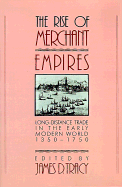Book contents
- Frontmatter
- Contents
- Preface
- Maps
- Introduction
- 1 Structural changes in European long-distance trade, and particularly in the re-export trade from south to north, 1350–1750
- 2 The growth and composition of trade in the Iberian empires, 1450–1750
- 3 The growth and composition of the long-distance trade of England and the Dutch Republic before 1750
- 4 France, the Antilles, and Europe in the seventeenth and eighteenth centuries: renewals of foreign trade
- 5 Productivity, profitability, and costs of private and corporate Dutch ship owning in the seventeenth and eighteenth centuries
- 6 The Dutch and English East India companies compared: evidence from the stock and foreign exchange markets
- 7 World bullion flows, 1450–1800
- 8 Merchant communities, 1350–1750
- 9 Economic aspects of the eighteenth-century Atlantic slave trade
- 10 Marginalization, stagnation, and growth: the trans-Saharan caravan trade in the era of European expansion, 1500–1900
- 11 The “decline” of the central Asian caravan trade
- 12 Merchant communities in precolonial India
- 13 Merchants without empire: the Hokkien sojourning communities
- Index
11 - The “decline” of the central Asian caravan trade
Published online by Cambridge University Press: 01 June 2011
- Frontmatter
- Contents
- Preface
- Maps
- Introduction
- 1 Structural changes in European long-distance trade, and particularly in the re-export trade from south to north, 1350–1750
- 2 The growth and composition of trade in the Iberian empires, 1450–1750
- 3 The growth and composition of the long-distance trade of England and the Dutch Republic before 1750
- 4 France, the Antilles, and Europe in the seventeenth and eighteenth centuries: renewals of foreign trade
- 5 Productivity, profitability, and costs of private and corporate Dutch ship owning in the seventeenth and eighteenth centuries
- 6 The Dutch and English East India companies compared: evidence from the stock and foreign exchange markets
- 7 World bullion flows, 1450–1800
- 8 Merchant communities, 1350–1750
- 9 Economic aspects of the eighteenth-century Atlantic slave trade
- 10 Marginalization, stagnation, and growth: the trans-Saharan caravan trade in the era of European expansion, 1500–1900
- 11 The “decline” of the central Asian caravan trade
- 12 Merchant communities in precolonial India
- 13 Merchants without empire: the Hokkien sojourning communities
- Index
Summary
The central Asian caravan trade linking Europe, the Middle East, and China, which had developed as early as the Han dynasty (206 b.c.–a.d. 220), began to decline during Sung (960–1279) times and truly collapsed in the late sixteenth and early seventeenth centuries. It flourished during the Han and T'ang (618–907) dynasties, but the turbulence in northwest China during the Sung period disrupted trade along the so-called Silk Roads. In the Mongol era (midthirteenth to midfourteenth centuries), trade across Eurasia witnessed a resurgence that continued through the first century or so of Ming (1368–1644) rule. By the late Ming, however, the long-distance trade between China and the Middle East and Europe had dwindled to a trickle.
Decline of this central Asian caravan trade has often been attributed to competition from the European oceangoing vessels that began to reach China in the sixteenth century. This new trade conveyed bulkier items, was less costly, and was freer of harassment and plunder. Such economic advantages, it has been asserted, enabled the sea trade to supersede the overland commerce, resulting ultimately in the collapse of the traditional caravan trade. This paper proposes, however, that though rising costs and competition from the oceangoing trade undermined land commerce across Eurasia, the political disruptions and the religious and social changes of the time must also be considered. These transformations were as critical as the economic pressures challenging merchants who were intent on maintaining the caravan trade.
- Type
- Chapter
- Information
- The Rise of Merchant EmpiresLong Distance Trade in the Early Modern World 1350–1750, pp. 351 - 370Publisher: Cambridge University PressPrint publication year: 1990
- 14
- Cited by

